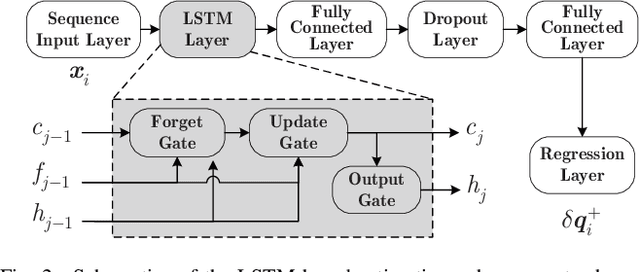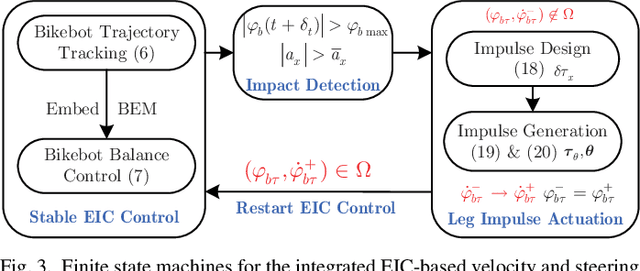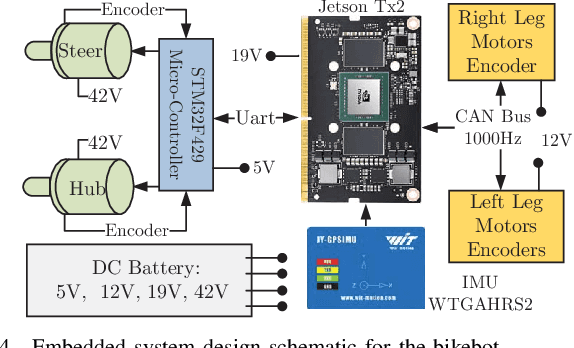Autonomous Bikebot Control for Crossing Obstacles with Assistive Leg Impulsive Actuation
Paper and Code
Mar 22, 2022



As a single-track mobile platform, bikebot (i.e., bicycle-based robot) has attractive navigation capability to pass through narrow, off-road terrain with high-speed and high-energy efficiency. However, running crossing step-like obstacles creates challenges for intrinsically unstable, underactuated bikebots. This paper presents a novel autonomous bikebot control with assistive leg actuation to navigate crossing obstacles. The proposed design integrates the external/internal convertible-based control with leg-assisted impulse control. The leg-terrain interaction generates assistive impulsive torques to help maintain the navigation and balance capability when running across obstacles. The control performance is analyzed and guaranteed. The experimental results confirm that under the control design, the bikebot can smoothly run crossing multiple step-like obstacles with height more than one third of the wheel radius. The comparison results demonstrate the superior performance than those under only the velocity and steering control without leg assistive impulsive actuation.
 Add to Chrome
Add to Chrome Add to Firefox
Add to Firefox Add to Edge
Add to Edge